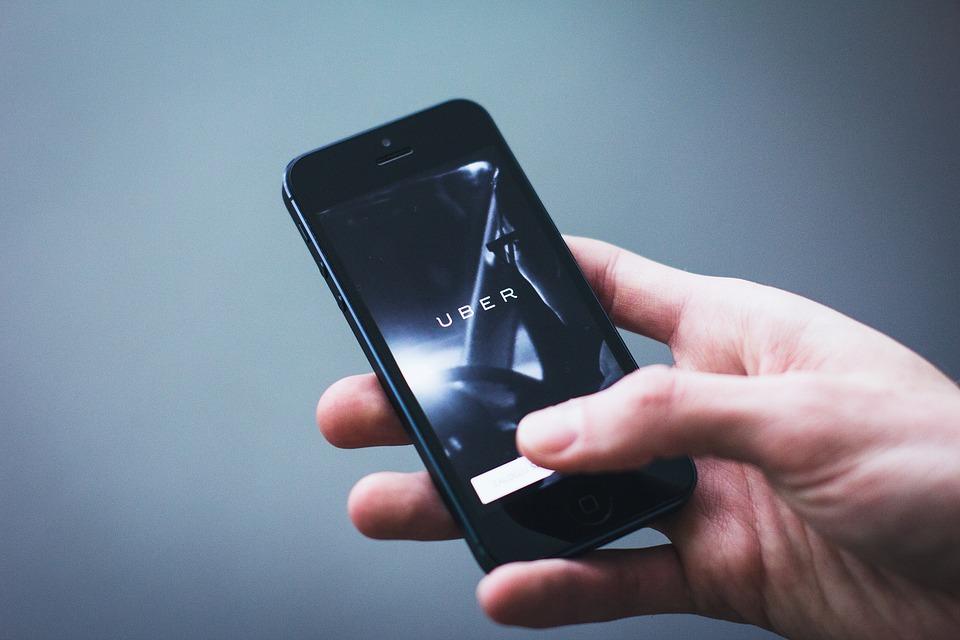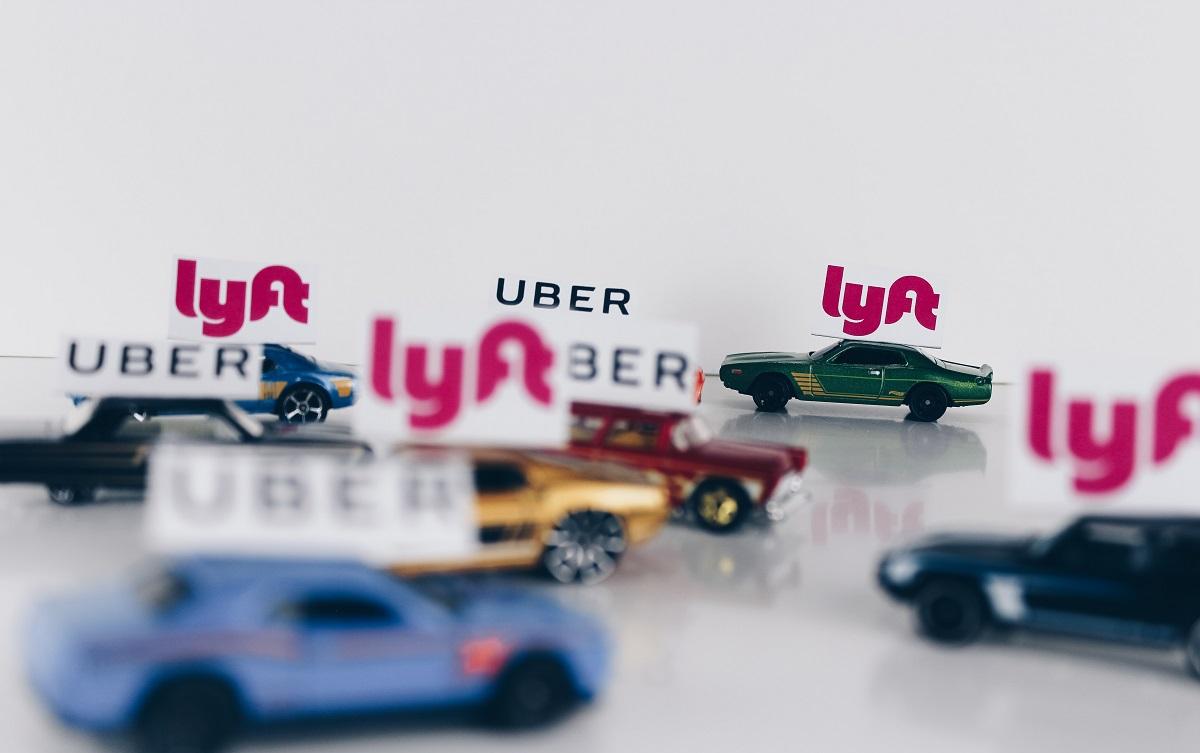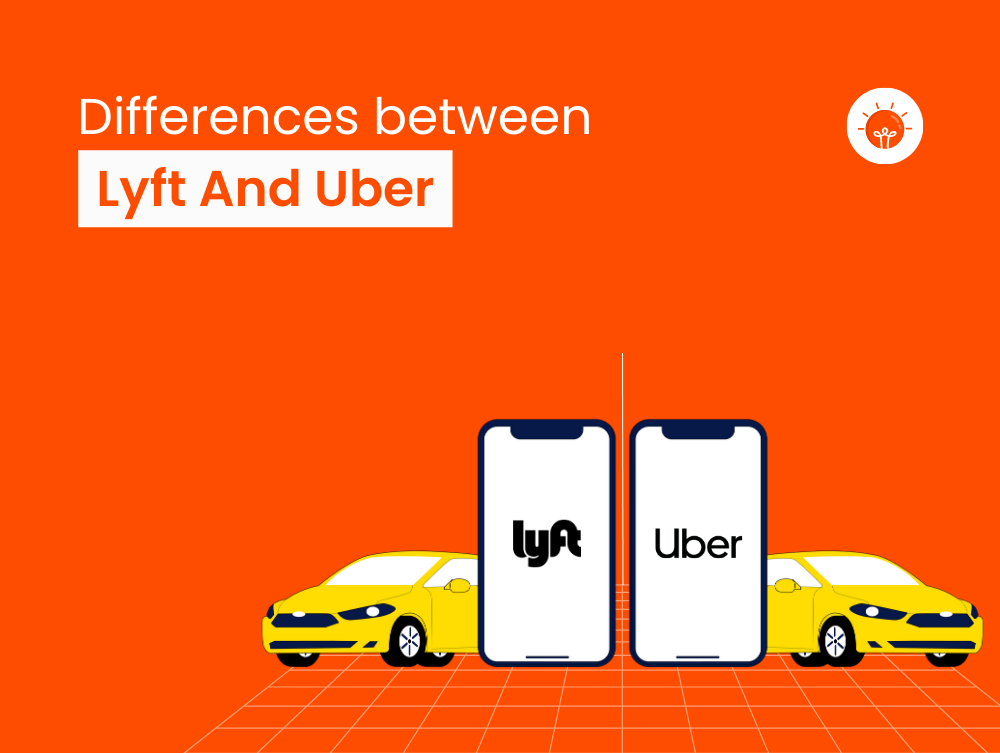Does Uber Own Lyft? Here's What You Need To Know!
Let’s cut to the chase, folks. Does Uber own Lyft? This is a question that’s been buzzing around for years, especially as these two ride-hailing giants continue to dominate the transportation industry. If you’ve been scratching your head wondering about the relationship between Uber and Lyft, you’re not alone. The short answer? Not exactly, but stick around because there’s a lot more to unpack here.
Picture this: Uber and Lyft are like two siblings in the same family, but they’re definitely not twins. They’ve been in a constant battle for market share, innovation, and customer loyalty. While Uber has tried to expand its empire through acquisitions, Lyft remains an independent player with its own unique story. But is there more to the story than meets the eye?
In this article, we’ll dive deep into the history, competition, and potential connections between Uber and Lyft. We’ll also explore what this rivalry means for consumers and the future of ride-sharing. So buckle up, because this ride is about to get interesting!
Read also:Ash Kash Erome The Ultimate Guide To His Life Career And Legacy
Table of Contents
- A Quick History of Uber and Lyft
- Does Uber Own Lyft? Clearing the Air
- Market Competition: Uber vs. Lyft
- Financial Performance and Market Share
- Uber's Acquisition Strategy: What About Lyft?
- Partnerships and Collaborations
- The Future of Ride-Sharing: Where Do Uber and Lyft Stand?
- What Does This Mean for Customers?
- Regulations and Challenges
- Wrapping It All Up
A Quick History of Uber and Lyft
Before we dive into the nitty-gritty of whether Uber owns Lyft, let’s take a trip down memory lane. Uber started in 2009 with the vision of revolutionizing urban transportation. Fast forward a couple of years, and Lyft entered the scene in 2012, positioning itself as the friendlier, more community-focused alternative.
Uber quickly became a global phenomenon, expanding to over 10,000 cities worldwide. Meanwhile, Lyft focused on the U.S. market, building a loyal customer base by emphasizing safety, affordability, and customer service. Both companies have faced their fair share of challenges, from legal battles to public scrutiny, but they’ve managed to stay at the forefront of the ride-hailing industry.
Key Milestones
- 2009: Uber launches in San Francisco.
- 2012: Lyft emerges as a direct competitor to Uber.
- 2017: Uber faces a leadership crisis, leading to significant changes in management.
- 2019: Both Uber and Lyft go public, sparking renewed interest in their rivalry.
Does Uber Own Lyft? Clearing the Air
Alright, let’s address the elephant in the room. Does Uber own Lyft? The answer is no, at least not directly. Uber and Lyft are separate entities with their own leadership, operations, and strategies. However, there’s been speculation over the years about potential mergers or acquisitions.
In 2020, rumors surfaced that Uber was considering acquiring Lyft. This would have created a transportation behemoth with unparalleled market dominance. But the deal never materialized, and both companies continue to operate independently. That said, Uber does hold a small stake in Lyft through its investments in other companies, but this doesn’t give it any control over Lyft’s operations.
Why Didn’t Uber Buy Lyft?
- Regulatory hurdles: A merger would likely face intense scrutiny from antitrust regulators.
- Market dynamics: Both companies have their own strengths and customer bases, making a merger less appealing.
- Strategic focus: Uber has been busy expanding into food delivery, logistics, and other areas, while Lyft remains focused on ride-hailing and electric bikes.
Market Competition: Uber vs. Lyft
The rivalry between Uber and Lyft is one of the most fascinating stories in modern business. Both companies have been locked in a fierce battle for market share, pricing, and innovation. While Uber dominates globally, Lyft holds its ground in the U.S. market, often offering competitive pricing and unique features.
According to recent data, Uber controls around 69% of the U.S. ride-hailing market, while Lyft captures approximately 29%. However, these numbers can vary depending on the region and the specific services offered. For example, Lyft has been gaining traction in certain cities with its focus on sustainability and community engagement.
Read also:Club Universidad Nacional Ac Training Complex The Heart Of Soccer Excellence
Key Differences Between Uber and Lyft
- Global vs. Local: Uber operates in over 10,000 cities worldwide, while Lyft is primarily focused on the U.S. and Canada.
- Service Offerings: Uber offers a wider range of services, including food delivery (Uber Eats), logistics (Uber Freight), and even air travel (Uber Copter). Lyft, on the other hand, focuses on ride-hailing, bike-sharing, and scooter rentals.
- Customer Experience: Lyft is often praised for its friendly drivers and customer service, while Uber is known for its efficiency and technology-driven approach.
Financial Performance and Market Share
When it comes to financials, both Uber and Lyft have shown impressive growth over the years. However, they’ve also faced challenges in achieving profitability. As of 2023, Uber reported revenues of over $29 billion, while Lyft’s revenues stood at around $4 billion.
Despite the revenue gap, Lyft has been making strides in improving its profitability. In fact, Lyft achieved profitability for the first time in 2022, beating Uber to the punch. This has given Lyft a boost in investor confidence and allowed it to focus on expanding its services.
Market Trends
- Ride-hailing demand is expected to grow by 15% annually over the next decade.
- Sustainability is becoming a key focus for both companies, with Lyft committing to an all-electric fleet by 2030 and Uber investing in electric vehicles and bike-sharing.
- Technology innovation, such as autonomous driving, is set to revolutionize the industry, with both companies investing heavily in R&D.
Uber's Acquisition Strategy: What About Lyft?
Uber has a history of acquiring companies to expand its footprint and diversify its offerings. Some notable acquisitions include Postmates, Careem, and Jump Bikes. However, Lyft has remained off the table, at least for now.
Uber’s acquisition strategy has been driven by its desire to enter new markets and offer a wider range of services. For example, the acquisition of Postmates helped Uber strengthen its food delivery business, while Careem allowed it to expand into the Middle East and North Africa.
Why Lyft Might Be Off Limits
- Lyft’s strong market position in the U.S. makes it a valuable independent player.
- Lyft’s focus on sustainability and community engagement aligns with its brand identity, making it less likely to sell out to a larger competitor.
- Regulatory concerns could make a merger or acquisition more challenging than it’s worth.
Partnerships and Collaborations
While Uber and Lyft may be rivals, they’ve also engaged in partnerships and collaborations to drive innovation and improve customer experiences. For example, both companies have partnered with automakers and tech firms to develop autonomous driving technology.
In addition, Uber and Lyft have worked with local governments and transit agencies to integrate their services into public transportation systems. This has helped reduce congestion, improve accessibility, and promote sustainable urban mobility.
Key Partnerships
- Uber: Collaborations with Tesla, Toyota, and Daimler on autonomous vehicles.
- Lyft: Partnerships with GM, Ford, and Waymo on self-driving technology.
- Both companies have partnered with cities like New York, Los Angeles, and Chicago to integrate their services with public transit systems.
The Future of Ride-Sharing: Where Do Uber and Lyft Stand?
Looking ahead, the future of ride-sharing is full of possibilities. Both Uber and Lyft are investing heavily in technology, sustainability, and new business models. Autonomous driving, electric vehicles, and shared mobility are just a few areas where we can expect significant advancements.
Uber has set its sights on becoming a platform for all things transportation, from ride-hailing to food delivery to logistics. Lyft, on the other hand, is focused on building a sustainable transportation ecosystem that prioritizes the environment and community.
Trends to Watch
- Autonomous driving: Both companies are investing in self-driving technology, which could revolutionize the industry by reducing costs and improving safety.
- Electric vehicles: The shift to electric vehicles is accelerating, with both Uber and Lyft committing to all-electric fleets in the coming years.
- Shared mobility: The rise of bike-sharing, scooter-sharing, and other forms of shared mobility is changing how people move around cities.
What Does This Mean for Customers?
For customers, the rivalry between Uber and Lyft means more choices, better prices, and improved services. Both companies are constantly innovating to stay ahead, which ultimately benefits consumers. Whether you’re looking for a ride, ordering food, or renting a bike, you’re likely to find a service that meets your needs.
That said, it’s important to keep in mind that the ride-sharing industry is still evolving. Regulations, technological advancements, and market dynamics can all impact the services offered by Uber and Lyft. As a consumer, it’s worth staying informed and keeping an eye on developments in the industry.
Tips for Customers
- Compare prices: Use apps like RiderGPT to compare fares and find the best deal.
- Check for promotions: Both Uber and Lyft frequently offer discounts and promotions to attract new customers.
- Consider sustainability: If you’re environmentally conscious, look for companies that prioritize electric vehicles and sustainable practices.
Regulations and Challenges
Like any industry, ride-sharing is subject to regulations and challenges. Both Uber and Lyft have faced legal battles over driver classification, data privacy, and safety. In some cases, these challenges have forced them to adapt their business models and operations.
For example, California’s AB5 law required companies to classify drivers as employees rather than independent contractors. This led to significant changes in how Uber and Lyft operate in the state. Similarly, data privacy concerns have prompted both companies to enhance their security measures and comply with regulations like GDPR.
Key Challenges
- Driver classification: The debate over whether drivers should be classified as employees or contractors continues to be a hot topic.
- Data privacy: As ride-sharing companies collect more data, ensuring privacy and security is becoming increasingly important.
- Safety: Both Uber and Lyft have faced criticism over driver and passenger safety, prompting them to implement new policies and technologies.
Wrapping It All Up
So, does Uber own Lyft? The answer is no, but the relationship between these two companies is far more complex than a simple yes or no. While they remain fierce competitors, they’ve also found ways to collaborate and innovate for the benefit of consumers.
As the ride-sharing industry continues to evolve, we can expect more exciting developments from both Uber and Lyft. Whether it’s through autonomous driving, electric vehicles, or shared mobility, these companies are shaping the future of transportation. So the next time you hail a ride, remember that you’re part of a revolution that’s changing the way we move around the world.
What do you think about the rivalry between Uber and Lyft? Leave a comment below and let’s keep the conversation going. And don’t forget to share this article with your friends and family!



